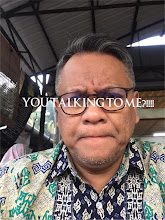Sorry for the inconvenience caused.
Salam
This is the class blog for the students of TSL 591: Methodology of Teaching Reading, ED220, B.Ed TESL, Faculty of Education, Universiti Teknologi MARA, Section 17, Shah Alam, Selangor, Malaysia.
Important features
A) Automaticity (application of lower level skills). In other words application of lower level reading skills is done automatically
B) Interaction between text & background knowledge
▫Interaction of the writer’s intentions and the reader’s interpretations
▫For example : What are the two meanings of the following sentence:
Flying planes can be dangerous
This shows that the writer’s intention and the reader’s background knowledge sometimes do not match
C) The role of social, contextual & political variables affecting meaning making
Problems with BU and TD
Drawbacks of Bottom-Up
Drawback of Top-Down

RUMELHART MODEL
In his model:

STANOVICH MODEL


ANDERSON & PEARSON SCHEMA-THEORETIC VIEW
Schemata:
Knowledge already stored in memory, function in the process of interpreting new information and allowing it to enter and become part of the knowledge store
Schema:
An abstract knowledge structure
A structure that represents the relationship among its component parts
Read this:
Queen Elizabeth participated in a long-delayed ceremony in Clydebank. Scotland yesterday. While there is still bitterness here following the protracted strike, on this occasion a crowd of shipyard workers numbering in the hundreds joined dignitaries in cheering as the HMS Pinafore slipped into the water.
What is the name of the ceremony?
PEARSON & TIERNEY R/W MODEL
MATHEWSON’S MODEL OF ATTITUDE INFLUENCE
Notes prepared by Dr. Faizah Majid
Exercise:
Read the title of an article from Reader's Digest
Are Your Normal or Nuts?
Think of the hypotheses that you may have formed, your conceptions and perceptions about the content of the article. Now read the article here and check whether your hypotheses, conceptions or expectations are confirmed.

READING PROCESS – PSYCHOLINGUISTIC’S POINT OF VIEW
Smith (1971) has categorized this act of ‘reduction of uncertainty’ under 4 headings:
1. graphic information
2. phonetic information
3. syntactic information
4. semantic information
Frank Smith’s famous example:
“The captain ordered the mate to drop the an___”
◦Graphic information – knowledge of English spelling tells us limited possibilities
◦Phonetic information – tells us the limited possibilities of sound, thus, reducing the uncertainty
◦Syntactic information – only adjective and NP phrase can follow ‘the’
◦Semantic information – our knowledge and the context limits us on the things that can be dropped. e.g. antelope
Thus, the uncertainty is reduced to the word ‘anchor’
Goodman (1967) – looked at reading as “a psycholinguistic guessing game”
Readers make use of 3 cue system represented by 3 levels of language within the text:
1. graphophonic (visual & phonetic features)
2. syntactic (possible kind of word order)
3. semantic (meaning of words)
Goodman, K. (1967) Reading: A psycholinguistic guessing game.
When reading:
READING PROCESS – SOCIOLINGUISTIC’S POINT OF VIEW
Kress (1985:44) - “ Although from the individual’s point of view, his or her reading is ‘just a personal opinion, that personal opinion is socially constructed”Thus, in taking a process view of reading, it is important to see it as involving not just psychological processes, but also social factor related to our membership of interpretative communities.
The production and reception of a given text depends on the writer’s and reader’s knowledge of other texts.It may also be helpful to know how a particular text relates to other texts by the same author and other contemporary genres.
All texts contain traces of other texts frequently cannot be readily interpreted – or at least fully appreciated – without reference to other texts. e.g. Academic reading materials
Interactive in several ways:
Notes prepared y Dr. Faizah Majid
 Consider what the question ‘Can you read this?’ would mean in each situation:
Consider what the question ‘Can you read this?’ would mean in each situation:
Week 1: Introduction
Week 2: Types of Reading (Wallace, Chap1)
Week 3: Models of Reading: Bottom-up & Top Down (Hudson, Chap 2)
Week 4: Models of Reading: Interactive-constructive & New Literacy Approaches (Hudson, Chap. 2)
Week 5: Reading skills (Hudson, Chap. 4)
Week 6 (Aug 11 – 15)Reading Strategies (Hudson, Chap 5); QUIZ 1 (Hudson, Chaps. 2 – 5)
Week 7 (Aug 18 – 22): Mid-Semester Break
Week 8 Second Language reading issues (Hudson, Chap. 3)
Week 9 (Sep 1 -3) Reading syllabus in Malaysian Secondary schools (Secondary English Curriculum); ASSIGNMENT 1 – Issues on second language reading classes
Week 10 Reading Materials (Chitravelu)
Week 11 Reading Activities (Chitravelu); QUIZ 2 (Chaps. 6 – 10)
Week 12 Reading assessments: Barret’s Taxanomy & samples of assessments
Week 13 (Sep 29 – Oct 3) - Special Break (Eid)
Week 14 (Oct 6 – 10)Microteaching; ASSIGNMENT 2 – Reading Test Evaluation
Week 15 (Oct 13 – 17) Microteaching
Week 16 (Oct 20 – 24) Microteaching
Week 17 Study Leave
